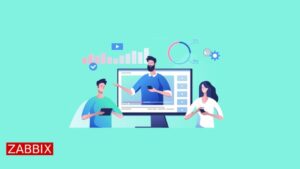Cloud Computing – Practice Test
Practice MCQ questions with answers to test your knowledge about Cloud Computing i.e. technologies, architecture, infrastructure, virtualization, data storage, etc. Test your knowledge and work on the questions you get wrong mostly.
From this course you will learn about cloud computing. you can see below for some about this:
What is cloud computing?
Cloud Computing: Simply put, cloud computing is the delivery of computing services—including servers, storage, databases, networking, software, analytics, and intelligence—over the Internet (“the cloud”) to offer faster innovation, flexible resources, and economies of scale. You typically pay only for cloud services you use, helping lower your operating costs, run your infrastructure more efficiently and scale as your business needs change.
Types of cloud computing
Not all clouds are the same and not one type of cloud computing is right for everyone. Several different models, types and services have evolved to help offer the right solution for your needs.
First, you need to determine the type of cloud deployment or cloud computing architecture, that your cloud services will be implemented on. There are three different ways to deploy cloud services: on a public cloud, private cloud or hybrid cloud. Learn more about public, private and hybrid clouds.
Public cloud
Public clouds are owned and operated by a third-party cloud service providers, which deliver their computing resources like servers and storage over the Internet. Microsoft Azure is an example of a public cloud. With a public cloud, all hardware, software and other supporting infrastructure is owned and managed by the cloud provider. You access these services and manage your account using a web browser. Learn more about the public cloud.
Private cloud
A private cloud refers to cloud computing resources used exclusively by a single business or organisation. A private cloud can be physically located on the company’s on-site datacenter. Some companies also pay third-party service providers to host their private cloud. A private cloud is one in which the services and infrastructure are maintained on a private network. Learn more about the private cloud.
Hybrid cloud
Hybrid clouds combine public and private clouds, bound together by technology that allows data and applications to be shared between them. By allowing data and applications to move between private and public clouds, a hybrid cloud gives your business greater flexibility, more deployment options and helps optimise your existing infrastructure, security and compliance. Learn more about the hybrid cloud.
Types of cloud services: IaaS, PaaS, serverless and SaaS
Most cloud computing services fall into four broad categories: infrastructure as a service (IaaS), platform as a service (PaaS), serverless and software as a service (SaaS). These are sometimes called the cloud computing stack because they build on top of one another. Knowing what they are and how they are different makes it easier to accomplish your business goals.
Infrastructure as a service (IaaS)
The most basic category of cloud computing services. With IaaS, you rent IT infrastructure—servers and virtual machines (VMs), storage, networks, operating systems—from a cloud provider on a pay-as-you-go basis.
Learn more about IaaS
Platform as a service (PaaS)
Platform as a service refers to cloud computing services that supply an on-demand environment for developing, testing, delivering and managing software applications. PaaS is designed to make it easier for developers to quickly create web or mobile apps, without worrying about setting up or managing the underlying infrastructure of servers, storage, network and databases needed for development.
Learn more about PaaS
Serverless computing
Overlapping with PaaS, serverless computing focuses on building app functionality without spending time continually managing the servers and infrastructure required to do so. The cloud provider handles the setup, capacity planning and server management for you. Serverless architectures are highly scalable and event-driven, only using resources when a specific function or trigger occurs.
Learn more about serverless computing
Software as a service (SaaS)
Software as a service is a method for delivering software applications over the Internet, on demand and typically on a subscription basis. With SaaS, cloud providers host and manage the software application and underlying infrastructure and handle any maintenance, like software upgrades and security patching. Users connect to the application over the Internet, usually with a web browser on their phone, tablet or PC.
Learn more about SaaS
Browse a dictionary of common cloud computing terms
Uses of cloud computing
You are probably using cloud computing right now, even if you don’t realise it. If you use an online service to send email, edit documents, watch movies or TV, listen to music, play games or store pictures and other files, it is likely that cloud computing is making it all possible behind the scenes. The first cloud computing services are barely a decade old, but already a variety of organisations—from tiny startups to global corporations, government agencies to non-profits—are embracing the technology for all sorts of reasons.
Here are a few examples of what is possible today with cloud services from a cloud provider:
Create cloud-native applications
Quickly build, deploy and scale applications—web, mobile and API. Take advantage of cloud-native technologies and approaches, such as containers, Kubernetes, microservices architecture, API-driven communication and DevOps.
Store, back up and recover data
Protect your data more cost-efficiently—and at massive scale—by transferring your data over the Internet to an offsite cloud storage system that is accessible from any location and any device.
Stream audio and video
Connect with your audience anywhere, anytime, on any device with high-definition video and audio with global distribution.
Deliver software on demand
Also known as software as a service (SaaS), on-demand software lets you offer the latest software versions and updates around to customers—anytime they need, anywhere they are.
Test and build applications
Reduce application development cost and time by using cloud infrastructures that can easily be scaled up or down.
Analyse data
Unify your data across teams, divisions and locations in the cloud. Then use cloud services, such as machine learning and artificial intelligence, to uncover insights for more informed decisions.
Embed intelligence
Use intelligent models to help engage customers and provide valuable insights from the data captured.

Cloud Computing – Practice Test
Cloud Computing – Practice Test”
¿Te gustaron los cupones? Tal vez también te guste este otro contenido:
Este curso se encuentra de manera gratuita gracias a un cupón que podrás encontrar aquí abajo.
Toma en cuenta que este tipo de cupones duran por muy poco tiempo.
Si el cupón ya ha expirado podrás adquirir el curso de manera habitual.
Este tipo de cupones duran muy pocas horas, e incluso solo minutos después de haber sido publicados.
Debido a una actualización de Udemy ahora solo existen 1,000 cupones disponibles, NO nos hacemos responsables si el cupón ya venció.
Para obtener el curso con su cupón usa este enlace.
Deja tus comentarios y sugerencias
Sobre Facialix
Facialix es un sitio web que tiene como objetivo apoyar en el aprendizaje y educación de jóvenes y grandes. Buscando y categorizando recursos educativos gratuitos de internet, de esta manera Facialix ayuda en el constante aprendizaje de todos.


